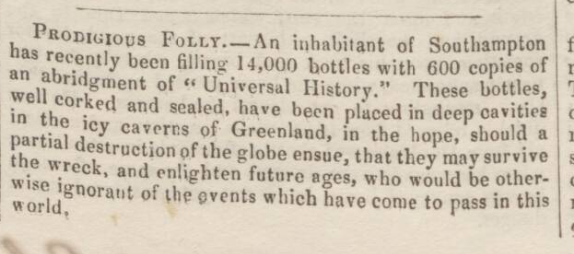
A man decides to walk one mile from A to B. A god waits in readiness to throw up a wall blocking the man’s further advance when the man has travelled 1/2 mile. A second god (unknown to the first) waits in readiness to throw up a wall of his own blocking the man’s further advance when the man has travelled 1/4 mile. A third god … &c. ad infinitum. It is clear that this infinite sequence of mere intentions (assuming the contrary-to-fact conditional that each god would succeed in executing his intention if given the opportunity) logically entails the consequence that the man will be arrested at point A; he will not be able to pass beyond it, even though not a single wall will in fact be thrown down in his path. The before-effect here will be described by the man as a strange field of force blocking his passage forward.
— Jose Benardete, Infinity: An Essay in Metaphysics, 1964




